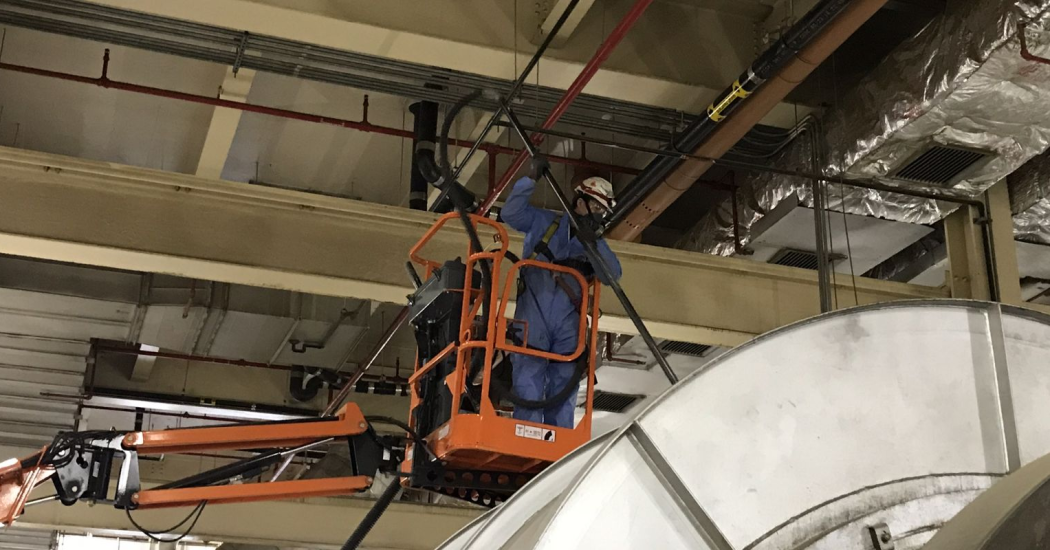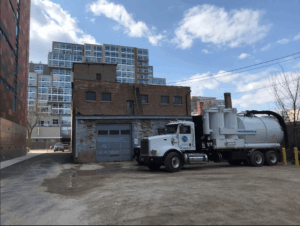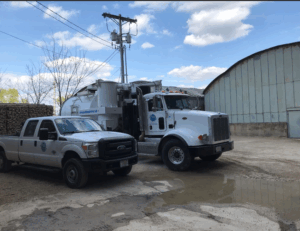Combustible dust cleaning frequency is one of the most important factors in ensuring workplace safety across industrial and manufacturing environments. Dust accumulation, though often overlooked, has been responsible for countless workplace fires and explosions. Even thin layers of combustible dust can ignite when exposed to heat or sparks, creating devastating outcomes.
For facility maintenance planners, the challenge lies in determining the right cleaning intervals, aligning with OSHA and NFPA standards, and implementing dust management practices that protect both employees and operations. This article explores the factors that influence cleaning schedules, regulatory expectations, and practical approaches to maintaining safe facilities.
The Importance of Dust Cleaning in Facility Safety
Dust cleaning is not just about maintaining a clean work environment. In manufacturing and processing plants, dust is fuel. When dispersed in the air and confined within an enclosed space, it creates the perfect conditions for an explosion.
Why Dust Cleaning Frequency Matters
Risk Reduction: Frequent cleaning minimizes the chances of hazardous buildup.
Regulatory Compliance: OSHA requires workplaces to remain free of unsafe dust accumulations.
Operational Continuity: Uncontrolled dust can damage machinery, disrupt operations, and increase downtime.
Employee Safety: Workers face serious risks when exposed to unsafe environments.
By setting the right maintenance schedule, facilities not only improve safety but also extend equipment life and reduce emergency costs.
OSHA Standards and Regulatory Expectations
While OSHA does not prescribe a one-size-fits-all combustible dust cleaning frequency, its standards clearly emphasize that employers must maintain safe working conditions. Facilities where combustible dust is present are required to:
Keep surfaces free of hazardous levels of dust.
Conduct regular inspections to identify accumulation.
Implement written housekeeping and maintenance programs.
OSHA’s Practical Guideline
A key OSHA benchmark states that dust layers greater than 1/32 of an inch—roughly the thickness of a paperclip—may be dangerous if covering more than 5% of a workroom surface.
This means that even if dust appears minimal, it could still exceed safety thresholds. OSHA inspectors often cite facilities that fail to maintain adequate cleaning schedules.
For further guidance on how OSHA relates to combustible dust hazards, see Great Lakes Power Vac’s combustible dust services.
NFPA Standards and Dust Hazard Analysis
The National Fire Protection Association (NFPA) sets additional safety standards, specifically NFPA 652, which requires facilities handling combustible dust to conduct a Dust Hazard Analysis (DHA).
A DHA evaluates:
Where dust is generated.
How dust accumulates in different parts of the facility.
Which areas require more frequent cleaning.
What equipment or cleaning methods should be used.
The DHA is an essential first step in setting an effective cleaning frequency, as it identifies high-risk zones that may need daily or weekly attention versus those that can be managed less frequently.
Factors That Influence Combustible Dust Cleaning Frequency
Not all facilities require the same cleaning intervals. Maintenance planners must consider a variety of factors:
1. Type of Industry
High-risk industries: Food processing, woodworking, and agriculture generate highly combustible dust and require frequent cleaning.
Moderate-risk industries: Metalworking and chemical processing often need weekly to biweekly schedules depending on materials.
Low-risk industries: Facilities with minimal dust production may clean monthly.
2. Type of Material
Flour, sugar, and spices – Ignite easily, requiring daily or near-daily cleaning.
Sawdust and fine wood powder – Highly combustible and must be removed regularly.
Aluminum and magnesium dust – Extremely hazardous, requiring strict monitoring.
Plastic resins or chemicals – Vary in flammability but still require proactive dust management.
3. Production Volume
High-output facilities produce more dust. Increased shifts or continuous operations shorten the safe cleaning interval.
4. Ventilation and Collection Systems
Well-designed dust collection systems reduce accumulation, allowing for longer cleaning intervals. Poorly ventilated facilities require more frequent intervention.
5. Facility Layout and Surfaces
Dust tends to accumulate in overhead beams, ductwork, vents, and machinery housings—areas that may not be visible but still require regular cleaning.
Recommended Cleaning Schedules by Industry
While cleaning schedules should always be based on hazard analysis, the following table provides general guidance:
Facility Type | Suggested Cleaning Interval | Notes |
Food Processing Plants | Daily to Weekly | Flour, sugar, and spice dust accumulate quickly and ignite easily. |
Woodworking Facilities | Weekly | Sawdust is highly combustible and requires frequent cleanup. |
Metal Fabrication Shops | Weekly to Biweekly | Aluminum and magnesium dust pose severe explosion hazards. |
Agricultural Operations | Daily to Weekly | Grain and feed dust often require multiple cleanings per week. |
Chemical Manufacturing | Biweekly to Monthly | Frequency depends on chemical type and dust properties. |
General Manufacturing | Monthly | Lower dust generation allows for longer intervals. |
This table should not replace a facility-specific risk assessment but can guide planners in drafting a baseline schedule.
Steps to Create a Maintenance Schedule
Developing a customized maintenance schedule ensures combustible dust hazards are managed consistently.
Step 1: Conduct a Dust Hazard Analysis
Identify high-risk areas where dust accumulates quickly. These zones should be prioritized for frequent cleaning.
Step 2: Document a Cleaning Program
Create written guidelines specifying intervals for each area, cleaning methods, and responsible parties.
Step 3: Assign Responsibility
Designate staff to handle routine cleaning and establish protocols for reporting dust levels.
Step 4: Use the Right Equipment
Never use compressed air to blow dust off surfaces—it disperses particles into the air and increases explosion risks. Instead, use industrial vacuum systems designed for combustible dust.
Step 5: Monitor and Adjust
Regularly review the effectiveness of cleaning. If inspections show faster accumulation, shorten the interval.
For facilities that require expert support, contact Great Lakes Power Vac to learn more about tailored cleaning programs.
Dust Management Best Practices
Beyond setting cleaning frequencies, facilities should integrate dust management into overall safety strategies.
Proactive Measures
Dust Collection Systems: Install source-capture equipment near machines that generate dust.
Routine Inspections: Monitor not just floors but also ceilings, beams, lights, and hidden surfaces.
Employee Training: Educate workers on combustible dust risks and housekeeping procedures.
Professional Cleaning Services: Engage specialized teams for thorough cleaning during shutdowns or in high-risk areas.
Explore more about specialized combustible dust cleaning services that comply with OSHA and NFPA standards.
Case Example: Food Processing Facility
A mid-sized food processing plant handling flour and sugar faced repeated OSHA citations for dust accumulation. Despite weekly cleaning, inspectors found layers of dust on overhead beams exceeding the 1/32-inch threshold.
By shifting to a daily cleaning schedule in high-risk zones and monthly deep cleaning of structural elements, the facility achieved compliance and significantly reduced risks of explosion. This case demonstrates the need to tailor cleaning intervals to material type and dust behavior.
Conclusion
Combustible dust cleaning frequency is a cornerstone of workplace safety in manufacturing and processing environments. While OSHA does not dictate exact schedules, it is clear that facilities must maintain safe levels of dust to avoid catastrophic incidents.
By considering industry type, dust material, production volume, and ventilation systems, maintenance planners can establish effective cleaning intervals. Integrating dust management into daily operations, supported by NFPA’s Dust Hazard Analysis, ensures long-term safety and compliance.
For facilities requiring specialized cleaning solutions, visit Great Lakes Power Vac or contact us to design a schedule that matches your operational needs.
Frequently Asked Questions
The interval depends on industry type, material properties, and production levels. High-risk industries like food and woodworking often require daily to weekly cleaning, while general manufacturing may manage monthly intervals.
Neglecting dust cleaning leads to dangerous accumulation, raising fire and explosion risks. It also exposes facilities to OSHA penalties and potential shutdowns.
No. OSHA requires workplaces to remain free from hazardous dust accumulations but does not set fixed schedules. Facilities must determine frequency based on risk.
No. Compressed air disperses dust into the air, increasing the risk of explosions. Only approved vacuum systems or wet cleaning methods should be used.
If dust accumulates faster than staff can control, or if hazardous materials are involved, professional combustible dust cleaning services are recommended.







